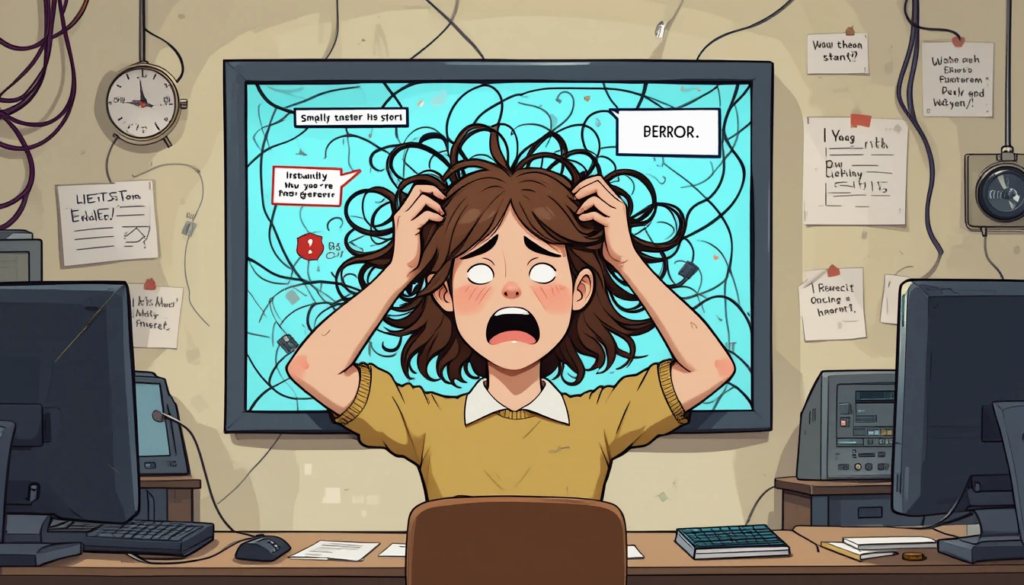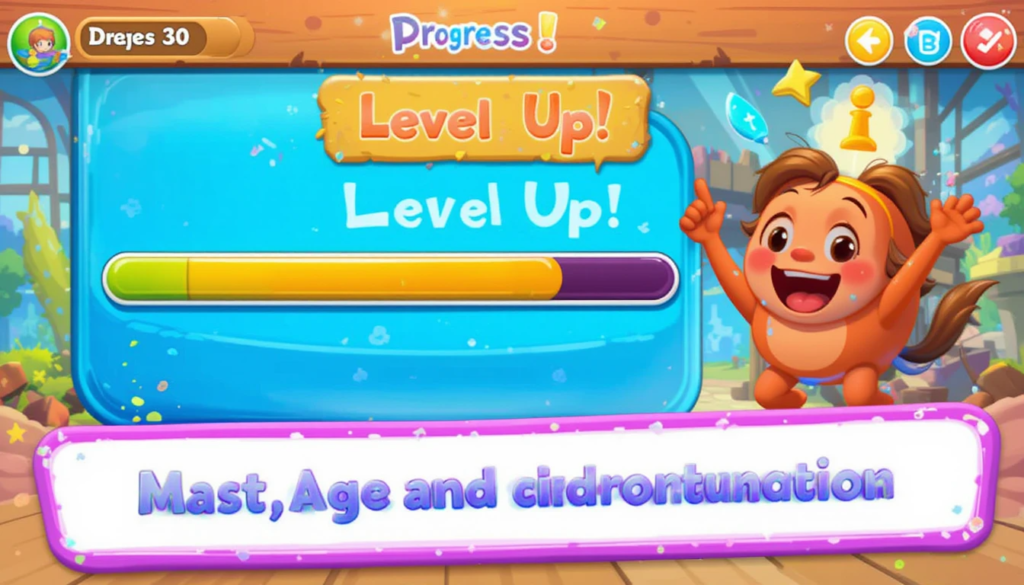Gamification in education, y’all—it’s like the shiny new toy I couldn’t resist. Like, I’d be the fun teacher, handing out virtual badges like candy. Spoiler: it’s not that simple. Here’s my raw, slightly unhinged take on whether gamification in education is worth the hype, straight from a dude who’s tripped over his own ego too many times.
I’m no edtech guru, okay? I’m just a teacher in the US, surrounded by empty chip bags and a flickering laptop screen, probably forgetting a parent meeting right now. My thoughts are messy, I typo’d my own lesson plan last week, but I’m spilling the tea on classroom gamification and what it’s really like.
Is Gamification in Education a Game-Changer? My Pros and Cons
Why Gamification in Education Kicks Butt
Educational gamification sounded dope when I first heard about it, sitting in a stuffy staff room that smelled like burnt microwave popcorn. I tried a quiz app like Kahoot (kahoot.com) during a history lesson, and my students lost their minds—in a good way. They were shouting answers, high-fiving, and actually remembering stuff. It’s engaging, and studies from Edutopia (edutopia.org) say it boosts motivation. I felt like a rockstar teacher for, like, a day.
My Win: My quietest kid got competitive on a vocab quiz and aced it. Felt like I cracked a code.
Why It’s Fire: Kids love games, and it makes boring stuff fun. Retention goes up.

So, is the hype justified? Or is it just a fancy way to make worksheets look cooler? Let’s break it down.
The Good Stuff: When Gamification Actually Works its Magic
When gamification in education is done well, it’s not just about slapping some points on an assignment. It’s about tapping into human psychology – what motivates us, what makes us feel accomplished, what keeps us coming back for more. Think about why people play games for hours on end, even when they’re frustrating. It’s that blend of challenge, progress, mastery, and a sense of purpose.
1. Boosting Engagement and Motivation (Bye-Bye Boredom!)
This is the big one. Traditional learning can be passive. Gamification, at its core, is about active participation. When students are playing a game, solving a puzzle, or working towards a badge, they’re doing something.
- What it looks like: Instead of just reading a chapter on historical figures, students might embark on a “historical detective quest” where they earn points for uncovering clues, interviewing “characters” (maybe other students or the teacher in character), and solving historical mysteries. Or a science class where completing experiments earns them “skill points” in “Scientific Inquiry” that unlock new, more complex experiments. This isn’t just about making things “fun”; it’s about making them engaging and intrinsically motivating. Suddenly, that dry history lesson isn’t so dry anymore.
2. Providing Instant Feedback (No More Waiting Weeks for Grades!)
One of the most frustrating things about traditional schooling is the delay in feedback. You do an assignment, you wait days (or weeks!), and by the time you get it back, you’ve probably forgotten half the questions. Games, on the other hand, give instant feedback. You make a move, you see the result. You mess up, you know right away.
- What it looks like: A math app that immediately tells a student if their answer is wrong and gives them a hint, rather than just marking it incorrect. Or an online language learning platform that corrects pronunciation in real-time. This immediate loop helps students correct misconceptions as they happen, which is incredibly powerful for learning. It’s like when I’m trying to cook a new recipe – I need to know if I messed up before I serve it to guests, not after! This really helps with personalized learning pathways too, because the system can adapt to what the student is doing right then.
3. Encouraging Mastery and Persistence (Don’t Give Up!)
In games, if you fail a level, you don’t usually just quit forever (unless it’s, like, really hard, then maybe). You try again. You learn from your mistakes. You tweak your strategy. You keep going until you master it. That’s a mindset we desperately need in education.
- What it looks like: Students earning “mastery badges” for demonstrating proficiency in a concept, allowing them to unlock the next level of content. Or a system where they can “redo” quizzes or assignments to improve their “score” or “rank.” This takes the sting out of failure and reframes it as part of the learning process. It promotes student achievement by building resilience. My little nephew, bless his heart, will spend hours trying to beat a level on his video game, but give him a slightly tricky math problem, and he’s ready to throw in the towel after two minutes. Gamification can bridge that gap.
4. Fostering Collaboration and Social Learning (Team Up!)
Not all games are solitary. Many involve teamwork, strategy, and communication. This can translate beautifully into the classroom.
- What it looks like: Group projects turned into “co-op missions” where students work together to solve a complex problem, earning “team points” or “guild renown.” Or a class leaderboard that encourages healthy competition and peer support. It can build a sense of community and help students develop crucial teamwork skills. Imagine a “science lab escape room” where students have to collaborate to solve puzzles using their scientific knowledge to “escape.” Kinda wild, right? And way more fun than just filling out a lab report.
Outbound Link Idea: A link to a popular education blog that discusses successful gamification strategies, perhaps with specific examples. Something like: https://www.edutopia.org/ (They often have great articles on this topic!)
The Not-So-Great Stuff: Where Gamification Can Go Wrong (And Turn into a Gimmick)
Okay, so it’s not all rainbows and XP points. There are definitely pitfalls when it comes to gamification in education. And this is where the hype can become just… well, hype.
1. Superficial Implementation: Just Adding Badges Won’t Cut It
This is the biggest culprit. Some folks think gamification in education just means adding points or badges to existing, boring lessons. Slap a “You earned a star!” on a worksheet, and suddenly it’s “gamified!” No. Just no. That’s like putting sprinkles on a pile of dirt and calling it a cupcake.
- What it looks like: A teacher creates a leaderboard for test scores, but doesn’t change anything else about the lesson. Or students get a “badge” for turning in homework, but the homework is still tedious. This kind of superficial gamification often leads to disengagement because it feels forced and inauthentic. Kids are smart. They can smell a gimmick a mile away. You ever try to trick a kid into eating vegetables by saying they’re “magic beans”? Yeah, that’s this.
2. Focusing on Extrinsic vs. Intrinsic Motivation: The “Prize” Trap
While external rewards (points, badges) can be a good starting point, the goal should always be to cultivate intrinsic motivation – the joy of learning for its own sake. If the only reason students are engaging is for the prize, then what happens when the prize goes away?
- What it looks like: A system where students only work hard to get the “top score” on the leaderboard, ignoring the actual learning process. Or a class where the learning stops as soon as the “game” is over. The trick is to use game mechanics to spark interest, then help students discover the inherent satisfaction of mastering a new skill or understanding a complex concept. We don’t want them to be trophy hunters; we want them to be knowledge explorers.
3. Over-Competition and Leaving Students Behind: The Dark Side of Leaderboards
Leaderboards can be motivating for some, but for others, they can be incredibly demoralizing. Not everyone thrives on direct competition, and seeing yourself consistently at the bottom of a list can crush confidence.
- What it looks like: Some students might become overly competitive and focus only on beating others, potentially even hindering their peers. Others might give up entirely if they feel they can’t “win.” Effective gamification should offer multiple pathways to success and celebrate individual progress, not just top performers. It’s like when I used to play Monopoly – I loved it until I started losing badly, then I just wanted to flip the board.

Outbound Link Idea: An article or research paper that delves into the potential negative impacts or common pitfalls of gamification if not implemented thoughtfully. Something from a research institution or an academic journal. Maybe something from a university site on psychology.
So, Is It Worth the Hype? My Unfiltered Verdict (Probably)
After all this rambling, what’s the verdict on gamification in education? Is it worth the hype?
My honest, messy, real-person answer is: Yes, but with a gigantic asterisk.
It’s not a silver bullet. It won’t magically solve every educational challenge. And if it’s done poorly – just adding points and badges without real pedagogical thought – it will absolutely fall flat. It might even make things worse.
But when it’s done right? When it’s thoughtfully designed to tap into genuine motivation, to provide meaningful feedback, to encourage persistence, and to make learning an active, engaging journey? Then absolutely. It can transform a classroom, ignite student interest, and help create a learning environment where kids (and dare I say, teachers) are actually excited to show up.
It’s about more than just games. It’s about understanding what makes us human – our desire for challenge, for mastery, for connection, for a little bit of fun. So, yeah, the hype is real, but the effort to do it well has to be real too. No shortcuts. Just like baking that sourdough – turns out, you actually need to understand the yeast. Who knew?
What do you think? Have you seen gamification work (or totally flop) in real life? Tell me about it!




